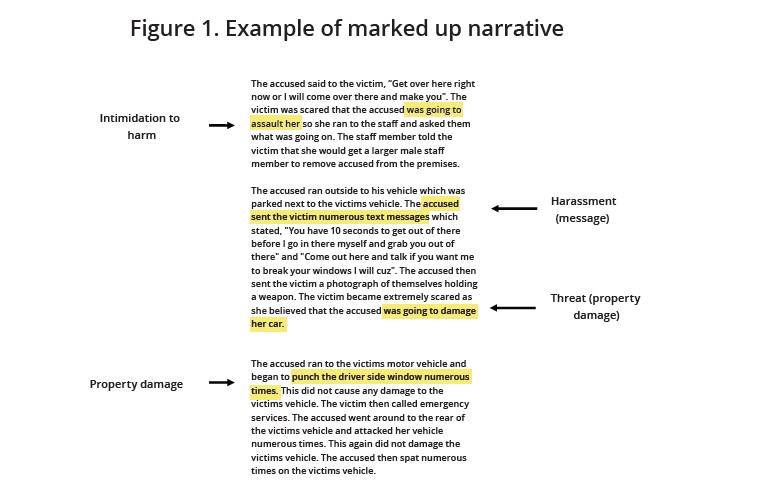It is a game changer for allowing us to look at a huge number of DV incidents. Previously when we were doing research like this, we would manually review a maximum of a few hundred incidents. But now using a text mining approach will see a paradigm shift in terms of how many records we can look at and the diversity of behaviours.
An artificial intelligence tool used by the NSW Bureau of Crime Statistics and Research (BOCSAR) to analyse more than half a million police domestic violence reports found 57 per cent included coercive control behaviours.
The tool is now being dubbed a “game changer” for law enforcement and solicitors in understanding the complexities of these offences.
The new study, released by BOCSAR on Tuesday, also found domestic violence assaults have risen by 13.5 per cent over the past five years.
Researchers used a “text mining” method to comb through police narratives of more than 520,000 domestic violence events between January 2009 and March 2020, and found more than half included at least one coercive control behaviour.
The most common behaviours uncovered were property damage and theft (present in 26 per cent of DV events); intimidation and threats (24 per cent) and verbal abuse (23 per cent). Of recorded DV offences, 10 per cent included a reference to threats of harm, and six pr cent included a threat to kill.

BOCSAR Executive Director Jackie Fitzgerald told LSJ the study is the first of this scale in NSW, and the text mining approach allows researchers to analyse a greater number of reports than ever before.
“It is a game changer for allowing us to look at a huge number of DV incidents. Previously when we were doing research like this, we would manually review a maximum of a few hundred incidents. But now using a text mining approach will see a paradigm shift in terms of how many records we can look at and the diversity of behaviours,” Fitzgerald said.
“We found examples of high-volume controlling behaviours but we’ve also found evidence of economic control and social isolation.
“We’re able to see that six per cent of incidents include a threat to kill the victim, which is concerning. These kinds of figures and behaviours would be masked by the general narrative description in the past. So, it’s really given us a better window into the complexity and severity of domestic violence.”
Last year, the NSW Government passed legislation to create a standalone offence for coercive control. When the laws come into effect in July 2024, it will be an offence to carry out repeated abusive behaviours to a current or former intimate partner with the intent to coerce or control, and if found guilty will carry up to seven years in jail.
It is estimated that 23 per cent of Australian women have experienced emotional abuse since the age of 15 (including controlling or threatening behaviours, incessant insults and intimidation by a current or previous partner), while 20 per cent have experienced stalking (including following/watching the person, maintaining unwanted contact and using social media or electronic devices to follow or track the person).
 BOCSAR Executive Director Jackie Fitzgerald
BOCSAR Executive Director Jackie Fitzgerald

Fitzgerald also told LSJ the high volume of coercive control behaviours found in the study is interesting given the offence is not currently specified in legislation. Further, Fitzgerald said the results will serve as an education piece for both police officers and criminal solicitors in understanding the nuances of domestic violence incidents.
“Some of the behaviours we found do overlap with existing offences, including intimidation and threats. But it really will be interesting to see how commonly these coercive control behaviours present once they are standalone offences and how much it increases,” she said.
“The results show the error in the old-fashioned view that domestic violence is only physical assault because there are a lot of controlling and dominating behaviours that surround these incidents. It adds to our understanding of how complex domestic violence is.
“Police are seeing economic control, social isolation and surveillance through tracking devices. If those behaviours are on the police radar, which a study like this can show, then police will know to look for them and record them better in future.”




